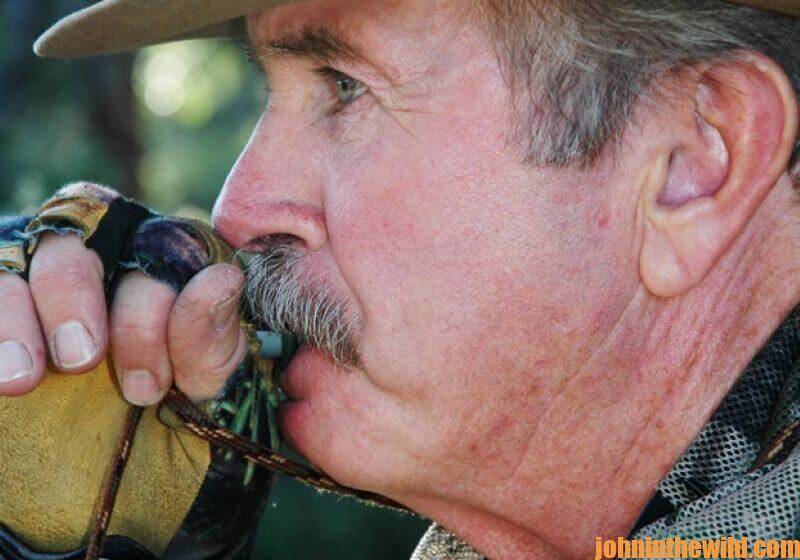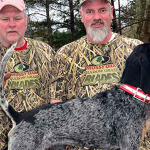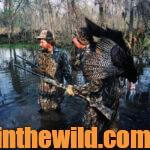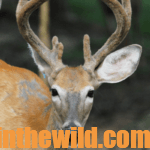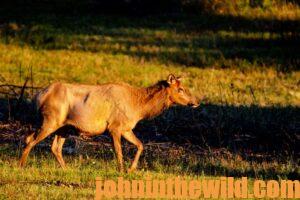 Editor’s Note: Wayne Carlton, of Montrose, Colorado, helps design elk calls, guides hunters to elk and is a TV host (https://www.nativebycarlton.com/). Now’s the time when many hunters are starting to get in shape and gather their equipment to go elk hunting out West. This week Carlton will tell us the most-common mistakes elk hunters make and also teach us a better way to call elk.
Editor’s Note: Wayne Carlton, of Montrose, Colorado, helps design elk calls, guides hunters to elk and is a TV host (https://www.nativebycarlton.com/). Now’s the time when many hunters are starting to get in shape and gather their equipment to go elk hunting out West. This week Carlton will tell us the most-common mistakes elk hunters make and also teach us a better way to call elk.
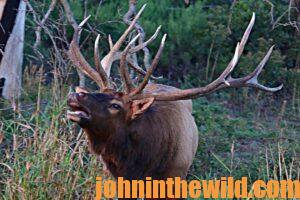 More than likely an elk won’t do what he doesn’t want to do. When you’ve got an elk bugling at 100 yards, and you’re hunting with a bow, the worst thing you possibly can do is to try to move-in closer on that elk. From turkey hunting, I’ve learned that patience will kill more turkeys than the fanciest calling, the finest shotguns and shells and the best camouflage. The same is true of elk. Your chances of taking an elk will be much better if you wait-out the elk, than if you try to go to him. When an elk’s at 100 yards, and you’re hunting with a bow, you’ll know where the elk is located. But he won’t know where you are, giving you the advantage. If you can give the elk enough reason to find you, and you’re not interrupted by another elk or hunter, your chances are reasonably good for taking that elk. So, if the elk is at 100 yards and out of bow or gun range, try to wait-out the elk. When an elk doesn’t know where I’m located, but I know where he is, if a mistake will be made, I’ll try to let the elk make it. But of course, I’m not perfect in my hunting.
More than likely an elk won’t do what he doesn’t want to do. When you’ve got an elk bugling at 100 yards, and you’re hunting with a bow, the worst thing you possibly can do is to try to move-in closer on that elk. From turkey hunting, I’ve learned that patience will kill more turkeys than the fanciest calling, the finest shotguns and shells and the best camouflage. The same is true of elk. Your chances of taking an elk will be much better if you wait-out the elk, than if you try to go to him. When an elk’s at 100 yards, and you’re hunting with a bow, you’ll know where the elk is located. But he won’t know where you are, giving you the advantage. If you can give the elk enough reason to find you, and you’re not interrupted by another elk or hunter, your chances are reasonably good for taking that elk. So, if the elk is at 100 yards and out of bow or gun range, try to wait-out the elk. When an elk doesn’t know where I’m located, but I know where he is, if a mistake will be made, I’ll try to let the elk make it. But of course, I’m not perfect in my hunting.
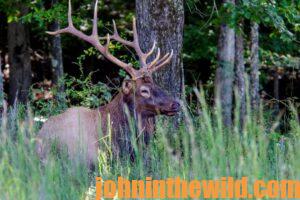 I got caught by an elk for not following my own advice. Here’s what happened. On the last day of hunting season one year, Jimmy Estes, a videographer, and I were out trying to take an elk. We had this elk bugling at 12,000 feet. We’d come over a pass and had lunch there. We were hunting off mules. Once we heard this elk bugle, we rode the mules down to the elevation where the elk was located. When we got close to where the elk was bugling, I started calling to him with the Hunter’s Specialties’ Mac Daddy, and the elk bugled back. I gave another call with an estrus whine call. We stayed above the elk and had the wind in our favor, since the draft was coming above the mountain. We’d used the Scent-A-Way system (https://www.gsmoutdoors.com/wp-content/uploads/2022/01/2022__Hunting_HuntersSpecialties.pdf), so I was confident the elk couldn’t smell us.
I got caught by an elk for not following my own advice. Here’s what happened. On the last day of hunting season one year, Jimmy Estes, a videographer, and I were out trying to take an elk. We had this elk bugling at 12,000 feet. We’d come over a pass and had lunch there. We were hunting off mules. Once we heard this elk bugle, we rode the mules down to the elevation where the elk was located. When we got close to where the elk was bugling, I started calling to him with the Hunter’s Specialties’ Mac Daddy, and the elk bugled back. I gave another call with an estrus whine call. We stayed above the elk and had the wind in our favor, since the draft was coming above the mountain. We’d used the Scent-A-Way system (https://www.gsmoutdoors.com/wp-content/uploads/2022/01/2022__Hunting_HuntersSpecialties.pdf), so I was confident the elk couldn’t smell us.
 In the high country where we were hunting, there were a lot of avalanche chutes. When an avalanche flies down a mountain, it generally takes out all the trees and exposes a few rocks and boulders. Estes and I thought the elk was bugling two avalanche chutes over from where we were positioned. So, we called and tried to sneak over to the spot from where we thought the bugling was coming. We looked straight ahead where we thought the elk was instead of looking down below us where there was a cow that we didn’t see. We spooked the cow, and she went straight down the mountain. The bull apparently was looking in the area where the cow had been, so he bugled in that direction, walked over to the edge of the avalanche chute and bugled down into the valley. The bull was only 50-yards from me at one time, and I could see him well, because the avalanche chute where we were positioned almost was completely devoid of trees. I could see the elk’s head, and he wasn’t looking up at us but rather down to where the cow had been. He went over and started raking a tree. Finally, the elk walked a little toward us but then turned and walked away. He was a beautiful 5X5 bull.
In the high country where we were hunting, there were a lot of avalanche chutes. When an avalanche flies down a mountain, it generally takes out all the trees and exposes a few rocks and boulders. Estes and I thought the elk was bugling two avalanche chutes over from where we were positioned. So, we called and tried to sneak over to the spot from where we thought the bugling was coming. We looked straight ahead where we thought the elk was instead of looking down below us where there was a cow that we didn’t see. We spooked the cow, and she went straight down the mountain. The bull apparently was looking in the area where the cow had been, so he bugled in that direction, walked over to the edge of the avalanche chute and bugled down into the valley. The bull was only 50-yards from me at one time, and I could see him well, because the avalanche chute where we were positioned almost was completely devoid of trees. I could see the elk’s head, and he wasn’t looking up at us but rather down to where the cow had been. He went over and started raking a tree. Finally, the elk walked a little toward us but then turned and walked away. He was a beautiful 5X5 bull.  When he heard that cow run-off, he didn’t know what had happened to spook the cow. He might have thought that she ran from other bulls coming to her. But he knew that cow was uneasy. Instead of trying to go to the bull, if I’d looked and listened for the cow, she would’ve come-in and lead the bull to us.
When he heard that cow run-off, he didn’t know what had happened to spook the cow. He might have thought that she ran from other bulls coming to her. But he knew that cow was uneasy. Instead of trying to go to the bull, if I’d looked and listened for the cow, she would’ve come-in and lead the bull to us.
So, when you’ve got a bull bugling, don’t get tunnel vision, and think you can walk to that bull and not spook the other elk that may be around you. When you hear a bull bugle, don’t become so focused at looking in the direction from where the bull has bugled and fail to see the other animals around you. That was the mistake I made. While I was attempting to get closer to the bull that was bugling, instead of trying to call the bull to me, I spooked the cow that spooked the bull, which was just as bad as spooking the bull. Before you try to close the distance on a bull that’s 100-yards away, make sure you give him plenty of time to come to you. If you have to go to him,  look for other elk that may be nearby that can spook your bull. Remember, if you ever have hunted turkeys, sometimes the hens will come to you before the gobblers will show-up. The same is true of hunting elk.
look for other elk that may be nearby that can spook your bull. Remember, if you ever have hunted turkeys, sometimes the hens will come to you before the gobblers will show-up. The same is true of hunting elk.
To learn more about elk hunting, check out John E. Phillips’ book, “How to Find Your Elk and Get Him in Close,” available in Kindle, print and Audible versions at http://amzn.to/17ENNqK. You may have to copy and paste this click into your browser. (When you click on this book, notice on the left where Amazon allows you to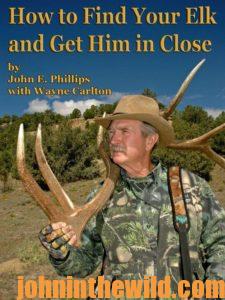 read and hear 10% of the book for free). On the right side of the page and below the offer for a free Audible trial, you can click on Buy the Audible with one click.
read and hear 10% of the book for free). On the right side of the page and below the offer for a free Audible trial, you can click on Buy the Audible with one click.
Tomorrow: J. R. Keller Takes Big Bull Elk



